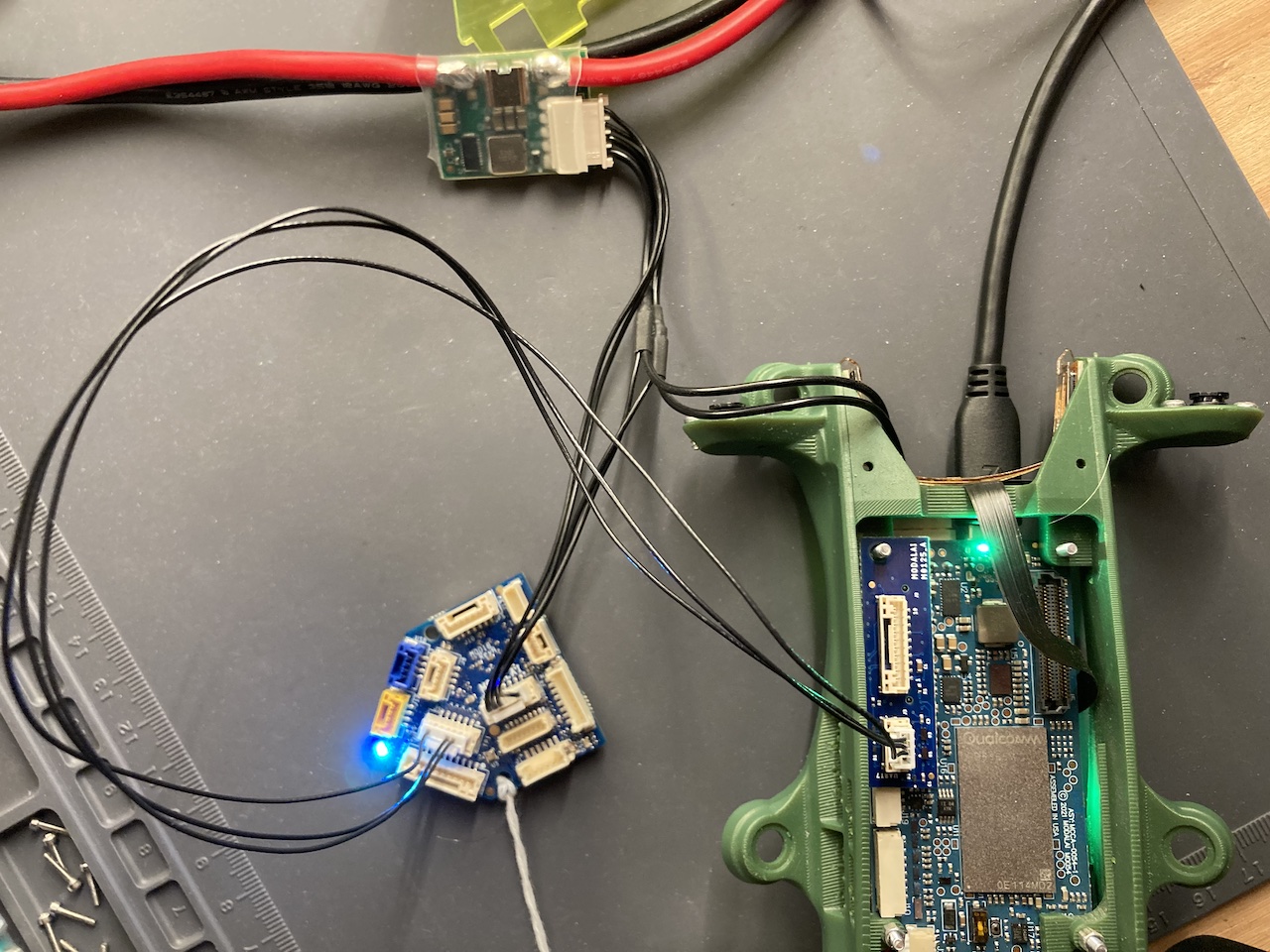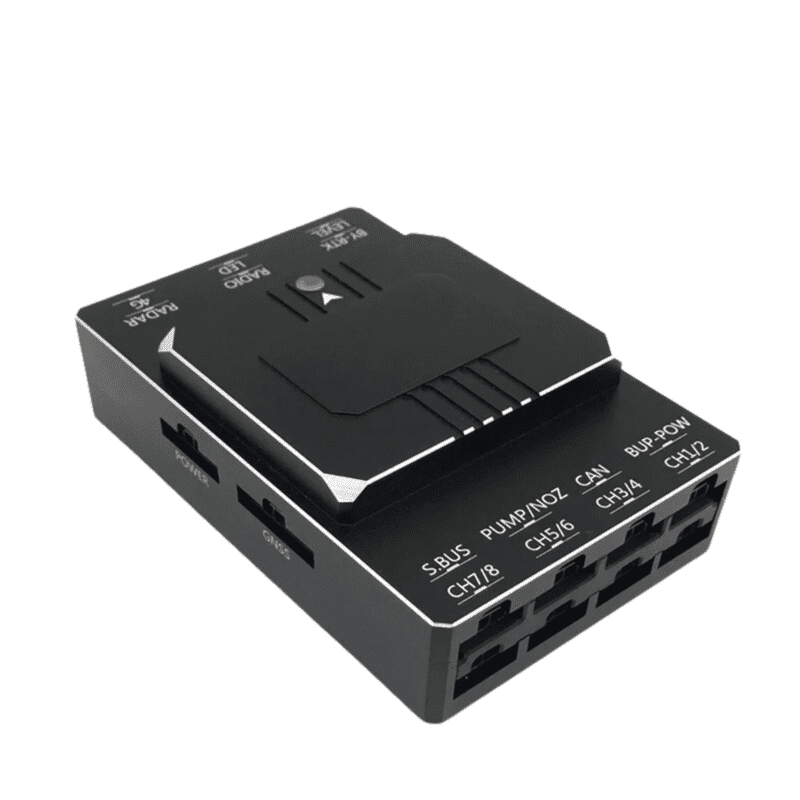Unparalleled Accuracy: SparkNavi Drone Flight Controller and GNSS/INS Made in Taiwan
Unparalleled Accuracy: SparkNavi Drone Flight Controller and GNSS/INS Made in Taiwan
Blog Article
Comprehending the Essential Functions and Features of a Drone Flight Controller for Optimum Airborne Performance
The trip controller offers as the crucial element in a drone's style, managing its activities and guaranteeing security through an advanced interaction of data and sensing units handling. Recognizing the necessary features and features of these controllers is essential for optimizing airborne efficiency, as they determine not only navigational accuracy but also overall security and dependability. With developments in innovation, the landscape of trip controllers is quickly advancing, prompting a better examination of what absolutely defines optimum functionality in this important system. What ramifications do these developments hold for both enthusiasts and specialists in the area?
Review of Trip Controllers
When exploring the world of drone modern technology, comprehending trip controllers is necessary for both enthusiasts and specialists alike. Trip controllers work as the mind of the drone, managing its movements and guaranteeing security during trip (SparkNavi drone flight controller and GNSS/INS made in taiwan). They refine information from various sensing units, consisting of gyroscopes, accelerometers, and barometers, to maintain balance and react to pilot inputs effectively
The design of flight controllers can differ significantly, varying from fundamental variations created for entry-level drones to advanced systems geared up with advanced attributes for expert applications. The combination of GPS capacities enables exact navigation and positioning, while programmable firmware enables customers to tailor flight qualities to suit their details demands.
Additionally, flight controllers are pivotal in facilitating communication in between the drone and the remote control, making it possible for real-time modifications and telemetry information transmission. Recognizing the different kinds of flight controllers, including multi-rotor, fixed-wing, and hybrid systems, is crucial for picking the appropriate design for a given application. Eventually, an extensive understanding of trip controllers not just enhances the flying experience but also optimizes the efficiency and safety of drone operations.
Key Functions of Flight Controllers
Trip controllers play a critical function in managing a drone's trip dynamics by carrying out several key features that make sure security and responsiveness. Among the primary features is the stablizing of the drone's positioning and altitude. This is accomplished through the integration of numerous sensors, including accelerometers, gyroscopes, and barometers, which constantly keep track of the drone's setting and movement.
.jpg)
An additional essential function is the processing of control inputs from the pilot or autonomous systems. The trip controller analyzes these inputs and changes the drone's electric motor speeds appropriately to attain the wanted trip path. This includes managing yaw, roll, and pitch, which are essential for ability to move.
Additionally, flight controllers are geared up with reliable devices. These functions are created to reply to essential scenarios, such as reduced battery levels or loss of signal, by starting predefined activities like going back to the launch factor or floating in place.

Vital Functions to Consider
Numerous necessary features should be taken into consideration when selecting a drone flight controller to ensure ideal performance and dependability. One important anchor facet is the controller's processing power, which establishes its ability to deal with complicated trip algorithms and real-time information processing. A higher handling capacity improves responsiveness and security throughout flight.
One more essential attribute is the number of sustained trip settings. A flexible flight controller ought to provide different settings, consisting of acro, elevation hold, and GPS-assisted settings, dealing with different pilot skill levels and functional scenarios. In addition, the presence of built-in security features, such as fail-safes and geofencing, can considerably boost functional safety and security.
Compatibility with different interaction protocols is additionally important, as it makes sure seamless assimilation with other devices and peripherals, such as remote controllers and telemetry systems. In addition, the controller's firmware need to be easy to use and routinely updated to incorporate brand-new functions and optimizations.
Combination With Sensing Units and Equipments
A flight controller's performance is heavily influenced by its capability to integrate with various sensors and systems. This integration is essential as it makes it possible for the trip controller to obtain real-time information essential for efficient flight administration. Secret sensing units consist of GPS, inertial measurement devices (IMUs), barometers, and magnetometers, each providing essential info regarding the drone's placement, altitude, and alignment.

Additionally, progressed trip controllers support integration with haul systems, consisting of cameras and other sensors, allowing improved functionalities such as independent navigating and obstacle avoidance. This interconnectedness not just boosts the drone's functional abilities however likewise increases its application possible across various sectors, from aerial photography to farming surveillance. Hence, a well-integrated trip controller is fundamental for accomplishing ideal airborne efficiency and making certain the integrity of drone operations.
Tips for Optimizing Performance
To make the most of the efficiency of your drone, several essential approaches can be utilized that concentrate on enhancing both software and hardware components. Initially, make certain that the flight controller firmware depends on date. Suppliers regularly release updates that enhance security, improve capability, and take care of insects. Consistently inspecting for these updates official source can considerably impact your drone's performance.
Correct calibration reduces drift and improves trip stability, particularly throughout complicated maneuvers. High-quality propellers can reduce drag and boost trip time.
Additionally, maximize your drone's weight by decreasing unneeded payloads. A lighter drone not just executes better however likewise expands battery look at this website life. Tweak your flight setups, consisting of PID (Symmetrical, Indispensable, Acquired) worths, to attain responsive and smooth handling. By executing these techniques, drone operators can substantially improve airborne efficiency, causing an extra delightful and reliable flying experience.
Final Thought
In verdict, an extensive understanding of drone trip controllers is vital for enhancing aerial efficiency. By prioritizing these aspects, drivers can significantly raise the efficiency and reliability of their drone systems in diverse applications.
Trip controllers offer as the brain of the drone, managing its activities and guaranteeing security throughout trip.Flight controllers play an essential duty in managing a drone's flight characteristics by executing several crucial features that ensure stability and responsiveness. The flight controller translates these inputs and readjusts the drone's electric motor speeds appropriately to accomplish the wanted trip course.Numerous vital functions need to be taken right into account when selecting a drone flight controller to guarantee ideal efficiency and dependability. Hence, a well-integrated trip controller is basic for attaining optimum airborne efficiency and ensuring the reliability of drone operations.
Report this page